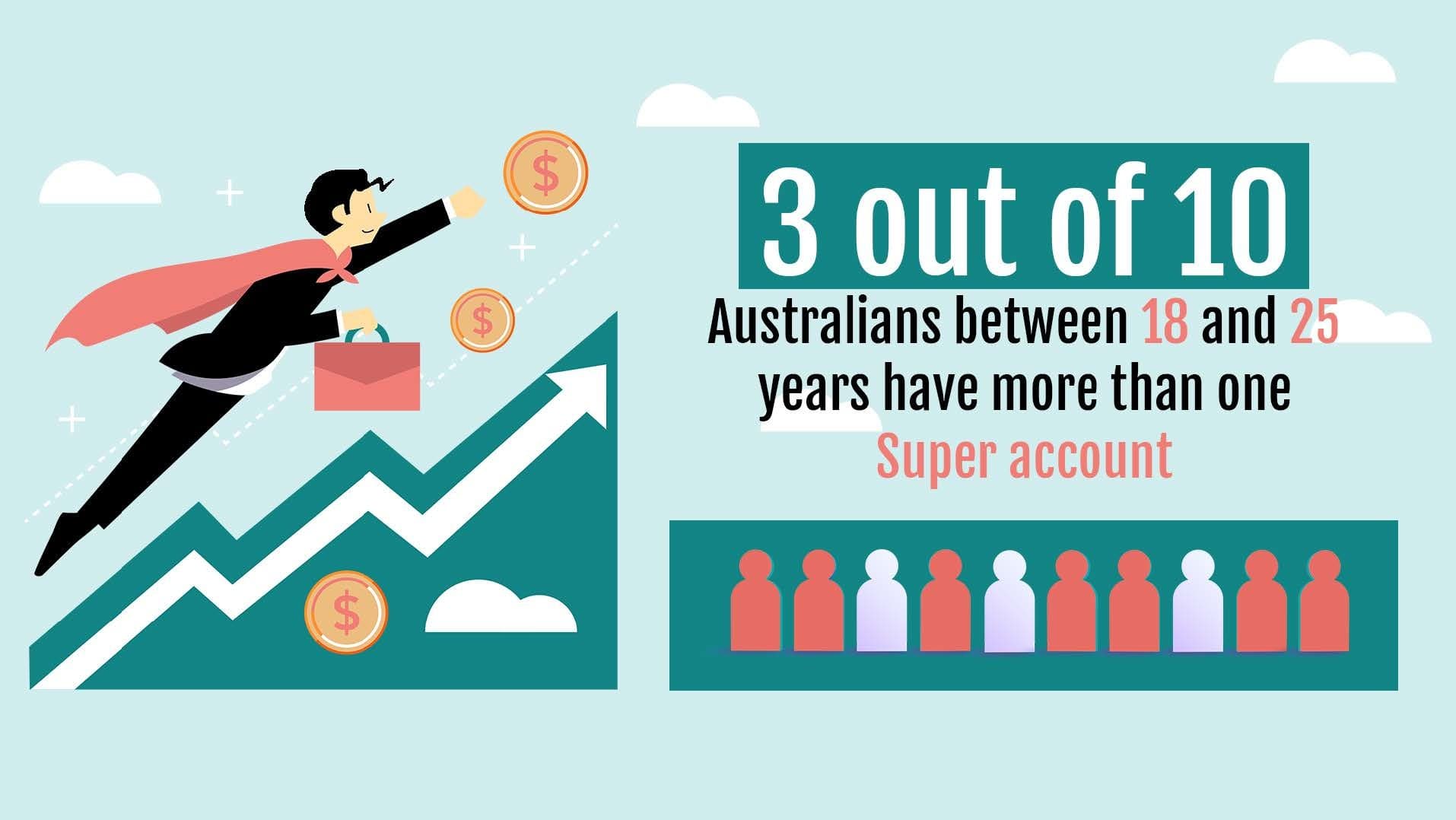The greatest financial challenge we face today is how to make forty years of working pay for seventy or more years of adulthood.
I get it, retirement might feel a long way off, so it can be difficult to give it the attention it deserves—specially when you’ve got life to live and bills to pay.
Luckily, your employer is required to put away 10.5% of your pay into your Super on our behalf. So if you earn $50,000 a year, you will receive $5,250 in contributions to your Super.
It’s your money—you just don’t get to spend it yet. But properly nurtured, this will go a long way to providing a reasonable retirement income. So how do you get the most out of it?
Here are the four things you can do today that will dramatically improve your retirement lifestyle, without affecting how you spend now.
1. Find Your Lost Super Money
If you have changed jobs, moved house, or changed your name, you could be one of the millions of Australians with money sitting in a lost or unclaimed Super account. There is over $16 billion sitting in Lost and Unclaimed Super Accounts held by Super Funds or the Australian Taxation Office.
Some of this could be yours—and if it is, it’s costing you money in fees and lost Super earnings.
You can find your Lost Super with a little bit of work. Start by visiting the ATO's Super Seeker Guide. It could be well worth your time.2. Round Up All Your Super and Put it in One Fund
Like most young Australians, chances are you’ve had a few jobs to help get you through education, either during the vacation or part time during terms. If so, its likley that you have more than one Super Fund. According to the Australian Taxation Office, there was around 3 million Australians with two or more Super accounts, as of June 2022.
The more funds you have, the more fees you pay. Most funds have a fixed administration fee regardless of how big or small your balance is. Multiple accounts usually mean unnecessary fees eroding your retirement savings.

Consolidating your Super means transferring it to one fund, which can save heaps on fees. There are circumstances where having more than one super fund can deliver significantt benfits including saving tax and may be worth the additional costs. A good financial adviser can help you work out if this is right for you.
Do not consolidate your super until you’ve checked whether it's the right move, you have arranged for replacement insurance, and you have lodged your notice of intent to claim a tax deduction for any personal super contributions you have made. Getting this wrong could cost you dearly.
3. Choose the right fund
Most Australians have the right to choose where their Super contributions go. There are hundreds of funds to choose from. So how do you choose the right one?
It comes down to getting the right balance of fees, performance, features, investment options and insurance to meet your needs. Everyone's needs are different – there is no one right answer.
Simply looking at fees and past performance is not usually a good way to choose a fund. Neither are reliable indicators of future results.
Generally low fees are good—but only if you are comparing like with like. Higher fees often get you features and options rather than better performance.
Past performance is not a great guide to future performance, but some funds have maintained above average returns over lengthy periods. This year's winners are not usually also next year's winners.
Don’t look too much at short term returns – look to see how the fund performed over a 5 to 10 year period. More importantly look at how they have achieved it. Look at how they invested th emoney - they may simply have taken more risk.
If you have poor health or a risky occupation, the right super fund can be the most cost effective source of insurance. In some cases the only source. But be careful of allowing the insurance tail wag the investment dog!
Here is my simple 8-step guide to choosing a super fund.
4. Invest it - the way that's right for you
A Super Fund is like a safe for your Super savings. The return comes from how the Super Fund chooses to invest your Super savings. The biggest driver of returns (before fees) is the type of assets chosen. In other words, it matters more how much of your money is invested in shares than the amount allocated to (say) Telstra. This is called asset allocation.
Some assets (like shares, some property and some infrastructure) are capable of growing much faster than inflation but come with a greater risk of loss—this is a particularly important characteristic when you are investing for the long term. These are called Growth Assets (Finance people aren’t particularly imaginative).
Other asset types (like cash and bonds) tend to produce low but steady returns with a low risk of losing money. These are referred to as Defensive Assets. Get your asset allocation right to get the return you need at a risk you are prepared to accept.
For long term investments like Super, mixing Defensive and Growth assets in the right proportion can deliver higher long term returns with less variability and risk.
Generally, if you target a higher return you need to accept a higher level of risk. If you are not prepared to take an appropriate level of investment risk, you may need to make greater contributions to deliver the same level of retirement income.
That’s it – your Super is sorted. Now you can get on with living the life you want with the money you have.
Once you’ve completed these four simple actions, you can sit back, relax and let time work its magic.
Your life style in retirement will usually be base don 4 pillars: your Super, Your (paid off) home, investments outside super, and the Government Age Pension.
Focus for now on growing your income, spending less than you earn, and investing your surplus.
When you've got some spare cash, generally you can choose to pay off debt (your home loan for example), invest it, or top up your super balance. Choosing wehteyou’re a little older, your home loan is well on its way to being paid out and you’ve got your bills under control, then come back and look at making additional contributions.

Vince Scully
Life Sherpa®
With over 25 years in Financial Services from consulting to management, Vince Scully is the go-to guy for wealth management and financial advice. Vince founded the Calliva Group; a fund manager, product issuer, advisor and lender to Government and private clients. Vince is an advisor to the Wealth Management Industry, and prior to his role as CEO at Calliva, a senior member of Macquarie bank’s infrastructure team.
Related Articles
Sign up to learn more money management tips!
Trending Articles
Why not take a quick quiz?








